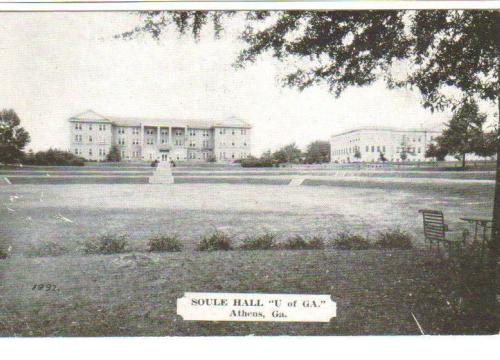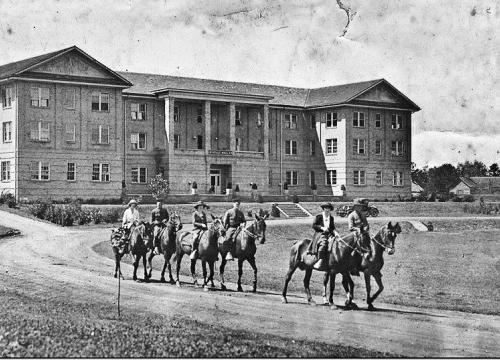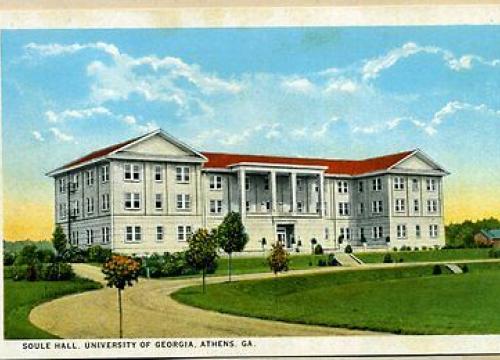Soule Hall – UGA 1220 (1920, Category 2). Soule Hall was constructed in 1920 as the first women’s dormitory on campus, soon after the introduction of women’s educational programming at the University. It is located on the west slope of Compton Hill downhill from Conner Hall, introducing a new use to the agricultural character of South Campus. The building was nicknamed the “co-ed barn.” The dormitory is named for Andrew M. Soule, who came to the University to reinvigorate the agriculture program in 1907.
Soule Hall became a central focus of women’s programs and the Beaux-Arts layout of South Campus. The amphitheater was constructed immediately to its east in 1922, symmetrical to the earlier building. The Woman’s Physical Education Building (1928), Dawson Hall (1932), Mary Lyndon Hall (1936), and Rutherford Hall (1939) were added around it and all focused on women’s programs. The central position of Soule Hall is notable on 1942 and 1947 plans of the campus.
Soule Hall is a three-story building constructed with tan brick in a restrained Beaux-Arts design. The building is U-shaped in plan, with a central mass facing east and west and small wings on the north and south ends that project east toward the location of the former amphitheater. The central mass is similar in design on both the east and west, with a modest entrance at the first floor level and a two-story open outdoor porch with brick columns at the second floor level.
Most dormitory rooms have large paired double-hung windows, providing ample light. The building’s original windows have been replaced with new metal double-hung windows with insulating glass, internal muntins, and external screens. The window replacement replicates the historic appearance of the originals and was well executed. Small vents have been introduced in the brickwork beneath most windows to serve internal air conditioning units that have been added. The vents were also well executed and are not visually intrusive. The building has an asphalt shingle gable roof with aluminum gutters and downspouts.
Still serving as a women’s dormitory, Soule Hall is significant to the Beaux-Arts period of the University’s development, retains integrity, and appears to contribute to a National Register-eligible historic district. It is assessed as a Category 2 resource.



